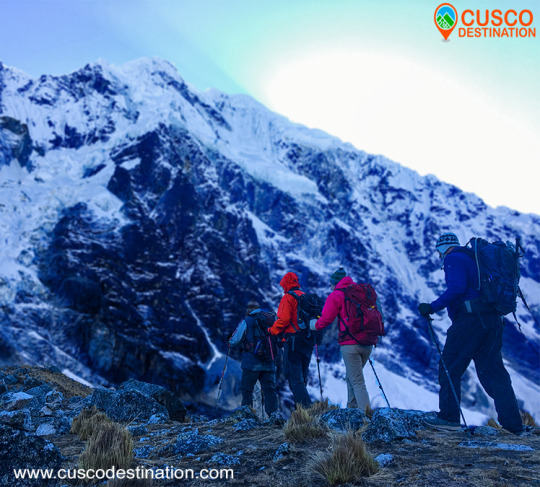
Our company has the Salkantay Trek, a walk that will take you to Machu Picchu.
Hence the name of Snowy Salkantay:
The name of this mountain is a contraction that comes from Salga = sullen or wild and Antay produces bees or avalanches. It is usually preceded by the name of Apu, which in Quechua language comes to mean sir, is defined as large mountains that mean something sacred above the valleys. For example, Apu Salkantay in the Vilcabamba mountain range.
Snowy Salkantay (6,271) Source: Musical Henares, S.L. (Alcalá de Henares - Madrid)
The great white Apu. A little stories between ropes and crampons:
The Salkantay is one of the highest mountainous regions of the Qosco (Cusco). The highest mountain is the Gran Agusánate with 65 meters more in the Vilcanota mountain range located further south. However, and without a doubt, it is the greatest in its splendid isolation and in the greatness of its double-headed massif, to which is added the fact of being one of the mountains of this magnificent Andean region that presents greater technical problems for all its slopes This is evidenced by the six itineraries opened to date by the different slopes of this white giant.
His conquest dates from 1952 by the Swiss cordate composed of Bronimann and Marx.
This first ascent, like so many others in the history of mountaineering, is involved in several contradictions, since a few days later it is promoted again by a Franco-American expedition that included the well-known and relevant mountaineer of the Claude Kogan era.
Modern statistics merit being the first woman on top of the Italian Consuelo Bonaldi who climbed Cresta Este on August 4, 1978 accompanied by G.Marconi, A.Monononi, F.Nodari, S.Castellani, Augusto Zanotti and M.Quatrinni, obviously this is a mistake, since Claude Kogan did it 26 years before.
The Salkantay summit has two peaks, the East and the West, formerly the West, more slender and attractive than the East, which was slightly taller because it was crowned by a seracoa. After the passing of the years and the collapse of this serac, as the prestigious Pyrenean Louis Audoubert has pointed out, the height is practically identical in both peaks.
What happened in those two consecutive “first ascents” gave rise to the controversy that it had really been the first real one.
The Swiss went up in the fog to the top of the East (the lowest in those days), the Americans however went up to the West, which was somewhat higher so the statistics, always relentless, want to deny Bronimman and Marx his first absolute ascension.
In 1953 he was climbed for the third time by the prestigious Alpine guide Lionel Terray, who together with the Dutch T. de Booy and the Swiss Raymond Jenny defeated the summit following a route along the northern ram, now known as the Terray Ram.
Years later, a German expedition tries the top following the dangerous crest of the N.E. which, with its cornices, does not favor traffic ... a relevant rope formed by Tony Mazenauer and Fritz Kasparrek (the latter conqueror of the north face of the Eiger) disappears on this ridge and the expedition has to be withdrawn.
Today there is a plaque commemorating that unfortunate event under the passage of Palcay (the usual base camp of the mountain) and on a block of visible rock.
On August 23, 1975, it was the turn of a long and steep crest of the S.E. of an Australian-New Zealand expedition composed of Peter Jennings, Wayne Barton and Michael Andrews. This ascent was the ninth to the top.












0 comments:
Post a Comment